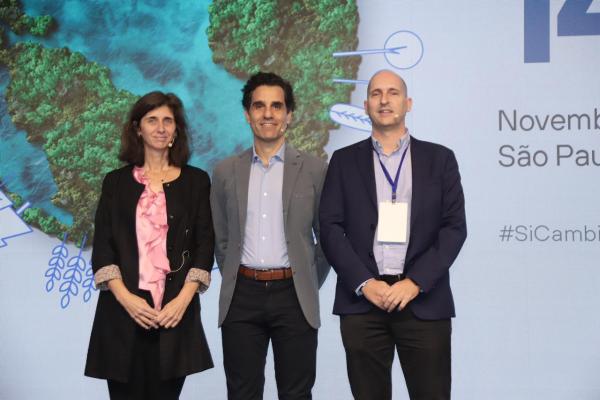There is no single recipe for reducing each of our carbon footprints, although certain everyday actions can help. Let’s look at some examples.
Energy efficiency
Energy savings and efficiency can be achieved on a small scale with numerous small gestures that add up, such as turning off lights and appliances when not in use.
Likewise, replacing incandescent light bulbs with LED bulbs can help reduce emissions by up to 40%.
Improving the insulation of doors and windows can also help reduce the use of heating in some months and air conditioning in others.
To raise awareness of the importance of this issue, World Energy Saving Day has been celebrated every 21 October since 2012.
Telefónica and its Renewable Energy Plan
Taking advantage of renewable energy sources is another way to help reduce energy consumption, something Telefónica is fully committed to as part of RE100, a global collaborative initiative of influential companies committed to 100% renewable electricity.
In addition to being 100% renewable in Europe and Brazil, the company has also made progress in other more energy-efficient technologies: fibre is 85% more efficient than copper and 5G is 90% more efficient than 4G.
Sustainable mobility
There are numerous possibilities for reducing the carbon footprint in the field of mobility.
Alternatives with a lower environmental impact include walking and cycling, a means of transport that recently, on 3 June, celebrated its international day: World Bicycle Day.
The use of public transport (such as buses, metros, trains or trams) is also an alternative with a lower carbon footprint, although if private vehicles are used, there are also ways to minimise the impact.
On the one hand, car sharing can reduce the number of vehicles on the road, which also helps to ease traffic congestion.
On the other hand, the type of vehicle, such as electric or hybrid, can also help minimise the carbon footprint.
Responsible consumption and recycling
Issues such as the reuse of materials, recycling or reducing the consumption of certain materials (with bags and packaging being prime examples in everyday life) are among the possible actions that can be taken to reduce the carbon footprint.
This is something that everyone can do individually in their own environment or at home, but it is also something that companies must address.
Circular economy
A circular economy is also something that Telefónica is no stranger to.
With the goal of becoming a Zero Waste company by 2030, by 2024 the operator had already reused and recycled 95% of its waste.
That same year, Telefónica gave a new life to more than five million pieces of equipment from operations, offices and customers, thus saving resources and carbon dioxide emissions associated with the manufacture of new products.
Another significant figure is that in 2024, the company reused more than 530,000 pieces of network equipment, representing an increase of 70% compared to 2023.
Similarly, the company has reused nine out of ten refurbished customer home devices, more than four million decoders and routers.
Reforestation programmes
Initiatives aimed at planting trees as a way of offsetting emissions are becoming increasingly common.
One example of this is the Telefónica Forest, a reforestation project that not only aims to increase forest cover but also to adapt the forest to climate change by introducing more resilient and regrowth-friendly species.
Located in the Spanish province of Palencia, specifically in the municipality of Fresno del Río, this wooded area has different tree species, including pine, poplar, holm oak, Pyrenean oak, ash, cherry and rowan, for a total of around 12,500 trees covering an area of 15 hectares.
It is estimated that during its life cycle, this Telefónica Forest will be capable of absorbing 3,000 tonnes of CO2.







